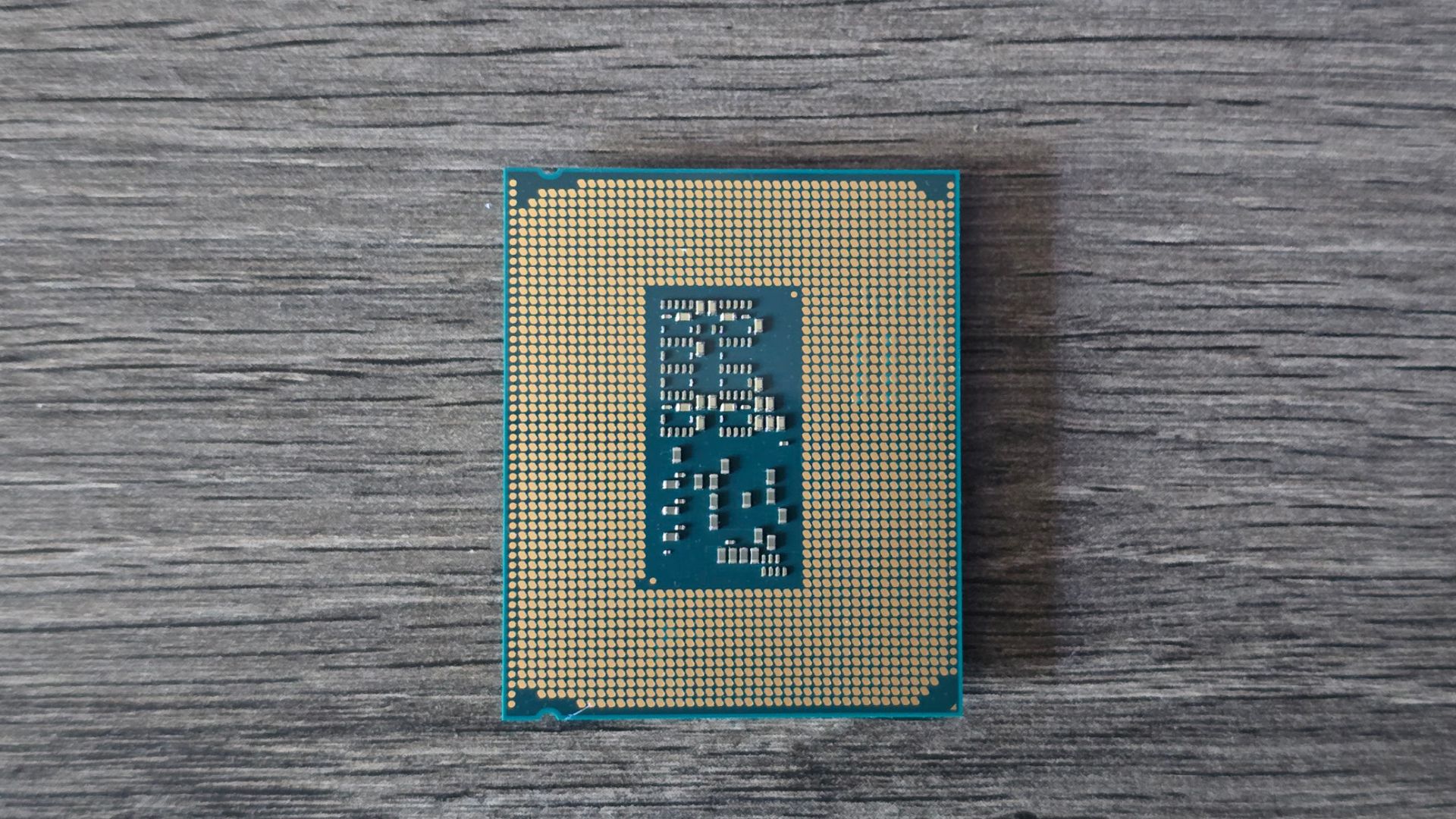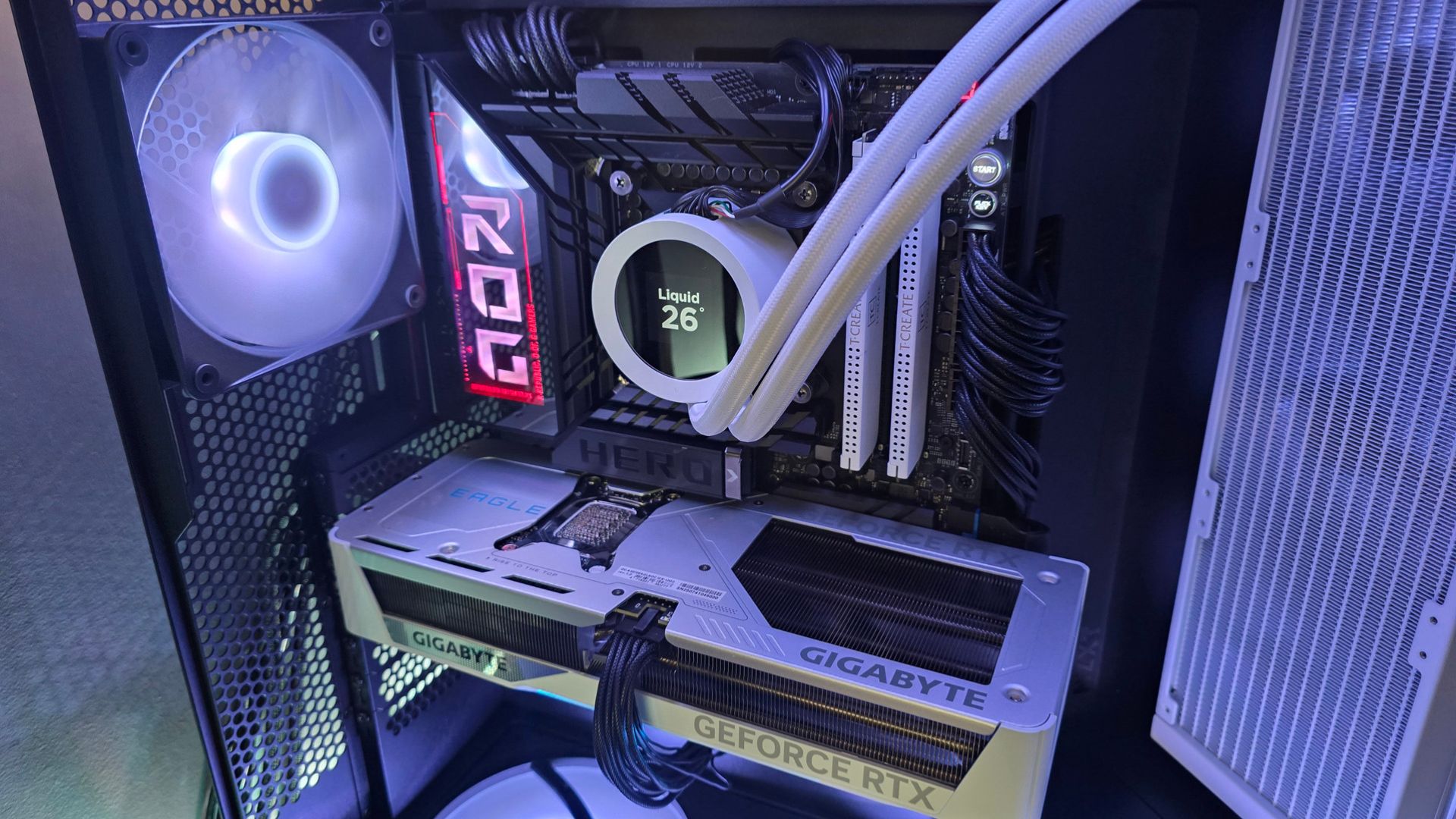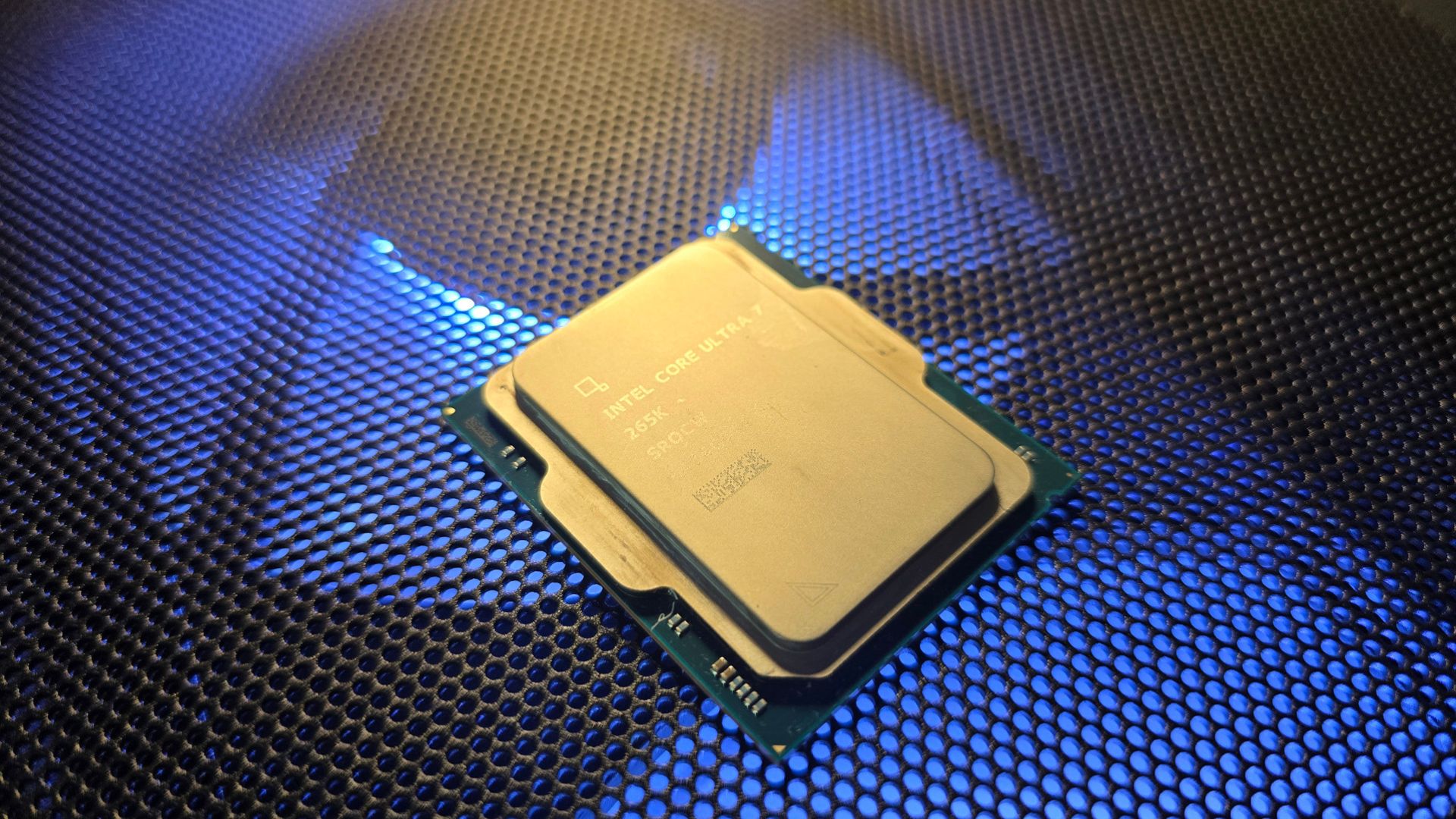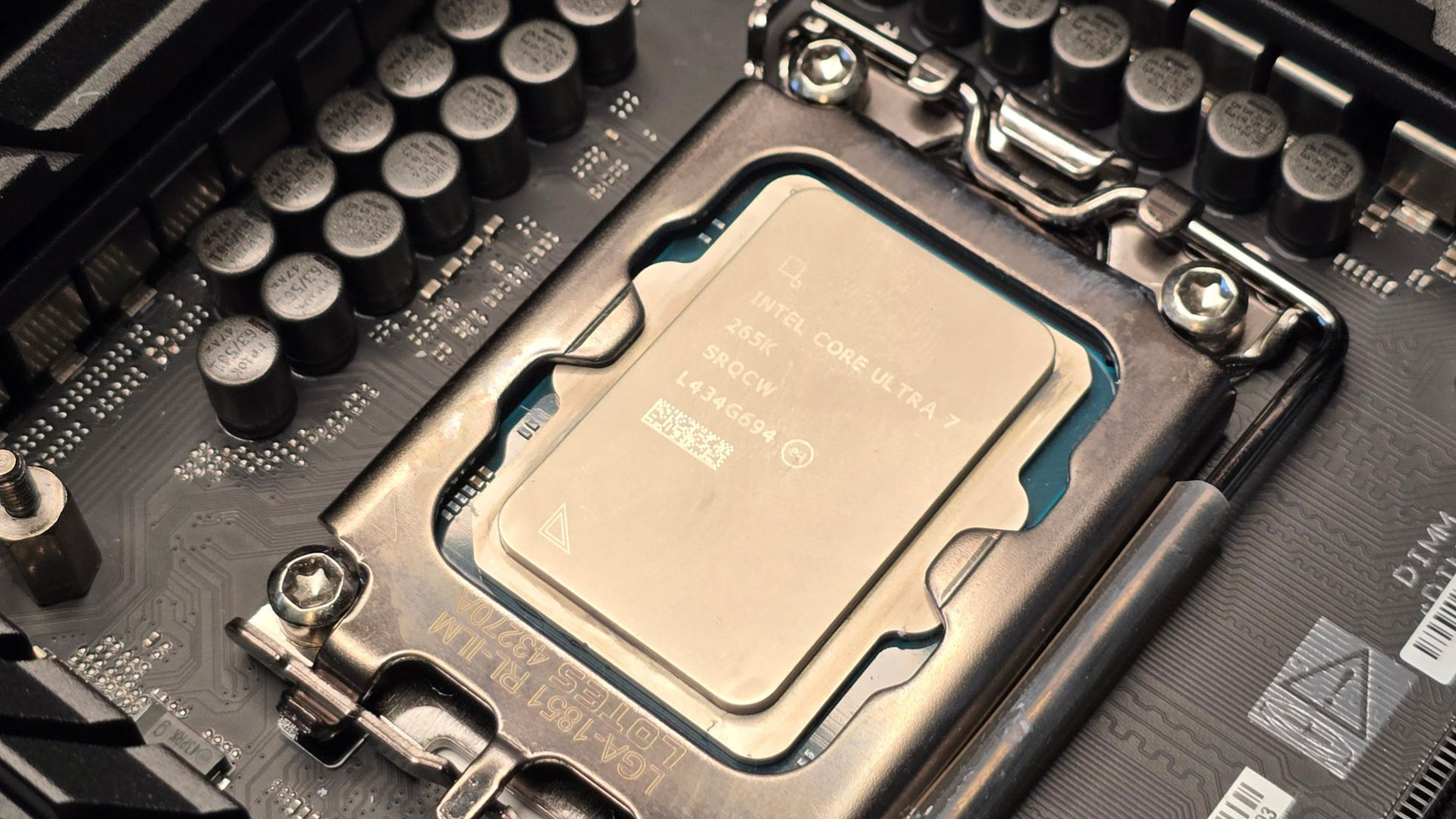GamesRadar+ Verdict
As the platform matures, Intel's Core Ultra 7 265K is certainly a lot better than when it first debuted way back in October of 2024. With strong computational prowess and a good showing in-game, it manages to deliver where it counts while remaining decidedly cool and impressively efficient as it does so. With Intel throwing larger price drops at it in a bid to draw consumers away from the 14th gen, it's a tantalizing chip to consider for your next rig.
Pros
- +
Strong value proposition
- +
Good at gaming
- +
Impressively efficient
Cons
- -
14th gen is generally better
- -
Not the best value compared to 14600K
Why you can trust GamesRadar+
The Intel Core Ultra launch, for Intel, has been rough. When the series finally landed on desktops late last year, including the Core Ultra 7 265K, it was undercooked, unoptimized, and generally disappointing. Performance, whether that was multi-core or single-core, gaming or rendering, unabashedly sucked, no matter what chip you got. Thanks to a mix of poor firmware, a lack of Windows resource integration, and early BIOS, the Core Ultra series didn't hit the ground running particularly hard, struggling to compete even with the then-nerfed 14th generation of Intel CPUs that had launched well over a year prior.
The entire lineup was effectively a massive shake-up in how Intel designed and created its chips up until that point. Processor designs that had been touted as some of the best CPUs out there were wantonly abandoned and thrown aside in search of a new design that would give Team Blue an advantage over AMD's recent success with the subsequent 7000 series, particularly its X3D lineup. In essence, the first-generation Ultra series, the 100 line, was confined to laptops only as a hyper-efficient, low-power alternative to Arm and Qualcomm's Snapdragon line. It was a minor success and inevitably became the blueprint for the Core Ultra 200 range on desktop.
After seven months, the question then has to be, "Is Intel's Core Ultra 7 265K a good bargain today?", particularly given everything that went on. It's certainly seen price drops since then, that's for sure (the Ultra 7 is now just $299/£239, down from its launch price of $400/£339), and both BIOS and Windows are now more mature, fully capable of taking advantage of Intel's new architecture. But given how poor that initial launch was, it's fair to say we're all still a little skeptical of Intel's redesign, and with good reason.
Specs & Features

If you’re someone who invested in an Intel motherboard and processor in the last three or four years, you might be asking why the brand chose to uproot its existing CPU socket for its latest generation. Well, by the end of 2023, Intel had kinda pushed its Performance/Efficient design to its limits. The style that was found in the 12th, 13th, and 14th gen chips. You could see it too; the 14th gen, itself really more of a refresh of the 13 series, the 14900K nothing more than a ramped-up 13900K, regularly ran at 100 degrees under load, no matter the cooling or the chip, pushing subsequent clock speeds all the way up to 6GHz and above as a result. All in an attempt to compete with AMD.
It wasn't without fault, however, and after numerous stability issues and motherboard manufacturer shenanigans came to light, in an effort to quell the (rightly justified) media and consumer uproar, Intel enforced a bevy of BIOS updates and microcode changes to reduce the amount of power being drawn by the chips. This quelled most of the issues, as it prevented the Raptor Lake products from permanently damaging themselves when in operation. That not only reduced temps (mildly) and increased stability, but it came at the cost of that top-tier launch performance, effectively invalidating most of those early reviews (my own included) and experiences in the process. In short, Intel was in the doghouse.

Then we got the Core Ultra lineup, and oh boy, the number of changes here was intense. We lost hyper-threading; Intel handed off the manufacturing to Taiwan Semiconductor Manufacturing Company (TSMC) and its 3nm process, it introduced an integrated NPU (neural processing unit used to accelerate AI calculations), and how it managed power delivery and clock speeds was wildly different compared to its predecessors. It's a chip that really should have been launched about 3-4 months later than it was, once the bugs had been ironed out, its BIOS had been developed, and Windows had been optimized for it. Sticking to release timelines and shareholder demands sometimes isn't the best play.
Although the CPU architecture has seen the biggest amount of change from a generational standpoint, the top-line specs aren't that radically different between the two generations. If you compare the 14700K to the Core Ultra 7 265K, they're impressively similar.
Weekly digests, tales from the communities you love, and more
Both feature eight Performance cores, and 12 Efficiency cores. Both have remarkably similar clock speeds (5.5 GHz for the Ultra 7 265K and 5.6 GHz for the 14700K), and both feature rather tight L3 cache sizing as well (or smart caching), with the 7 265K touting 30 MB versus the 14700K's 33 MB.

The biggest and most notable difference is that lack of hyper-threading or simultaneous multi-threading across the range. Something that for the longest time has been a staple of Intel's Performance cores, even pre-dating the P/E split.the
In essence, you can think of hyperthreading like an arm. Each core is a mouth that needs feeding, and by default, it has one arm or thread that can grab that food from the relevant resources. What hyperthreading does is add an extra arm into the equation; it effectively simulates a virtual core to the operating system. Although it doesn't necessarily equate to a direct doubling of performance, it generally ensures that the physical core, or mouth, can continually be fed with instructions rather than sitting there idly, waiting for that next resource or instruction to come to it.
Launch date: October 24th, 2024
Core Count: 8 (8) / 12 (12)
Threads: 20
L3 Cache: 30MB
Base Clock: 3.3GHz
Boost Clock: 5.5GHz
Max recommended RAM speed: Tested up to 6,400MHz
Integrated graphics: Yes, Intel Graphics
Motherboard socket: LGA 1851
Launch price: $399 / £339
GR+'s recommended GPU pairing: Nvidia GeForce RTX 5070 / AMD RX 9070 or above.
It does, however, require more power to operate like that, and the Core Ultra architecture is designed first and foremost around efficiency and reduced latency above all else. On the surface, that looks incredibly bad, as the 14700K touts a whopping 28 threads, versus the Ultra 7's meager 20, but not all is as it first appears. Certainly, in regard to performance.
Launch pricing between the two remained fairly consistent as well, despite inflationary pressures (or because of), with the 14700K sitting pretty at $410 / £400 back in October of 2023 and the 265K arriving at $400 / £340 in October 2024. There's a catch there, though, and that's the socket. Namely, if you want one of the latest Core Ultra lines, you inevitably have to invest in a new motherboard as well, as it is only compatible with LGA 1851 sockets, not the older LGA 1700 sockets common across the 12th, 13th, and 14th gen chips.
Intel really has struggled to shift these CPUs since their launch, though, and the debut RRP prices have fallen dramatically as a result, as it tries to encourage consumers away from its 14th-gen lineup onto the newer chips. You can currently pick up an Ultra 7 265K (at time of writing) for a staggeringly low $299 or £239, whereas the 14700K is only available at $336 or £297, as it approaches end of life.
Performance

So then, the good news is I've spent the last few weeks re-benchmarking and testing as many modern CPUs as I can get my hands on in a fairly hefty testbed, including the Core Ultra 7 265K. The situation for Intel and this new lineup, certainly since I first used it back in October, has improved dramatically. Although there are some caveats to that statement.
As for rendering performance, Cinebench multi-core and single-core scores are far, far, far better than they were way back when. I still have the results from when I initially tested the Core Ultra 9 in Cinebench 2024, and that was clocking in numbers of 98 points in the single-core and 2,252 in multi-core. Comparatively, the Ultra 7 265K today managed 1,938 points in multi-core and 128 in the single-core test. Albeit with four fewer cores and a 200 MHz drop in clock speed. Not too shabby.
Cinebench Multicore: | 1,938 | 78°C |
Cinebench Single Core: | 128 | 78°C |
Blender Junkyard: | 137.84spm | 75°C |
Compared to last gen, those numbers are admittedly less impressive, however. The 14700K managed 124 points in single-core and 1,834 in multi-core. That's a 3% improvement on single-core and 6% on multi-core, which is less than stellar. General clock speed was far lower too, with the 14700K tapping out at 5,586 MHz and the Ultra 7 at exactly 5,500MHz. Although it's worth noting that clock speed alone (particularly when transitioning architectures and manufacturing size) often isn't a good indicator of performance. Plus, the Ultra 7 doesn't have hyperthreading either, so performance per thread here is kinda through the roof in a lot of ways.

In Blender, however, the results were far less impressive, with the 14700K winning out by two points in the CPU test and 33 points in the GPU test utilizing Junkyard.
And then we get to gaming, and oh boy, is there a lot to cover here. For my gaming tests, I ran a total of three different mainstream high-end titles across the three key resolutions: 1080p, 1440p, and 4K, on the Ultra preset with a few tweaks here and there. The games being, Total War: Warhammer 3 with the Mirror of Madness benchmark, Cyberpunk 2077 with DLSS "Quality" and MFG x2 enabled, and Final Fantasy XIV's Dawntrail benchmark with FSR enabled.
Intel Z890 Motherboard: ASUS ROG Maximus Z890 Hero
Intel Z790 Motherboard: NZXT N7 Z790 (ASRock)
AMD X670 Motherboard: Gigabyte X670 Aorus Elite AX
Cooler: 360mm NZXT Kraken Plus RGB
RAM: 64GB (2x32GB) Team Group T-Create DDR5 @ 6000 C34
SSD: 4TB Samsung 9100 Pro - PCIe 5.0
Graphics Card: RTX 5070 - Gigabyte Eagle OC Ice SFF
Case: NZXT H9 Flow
PSU: 850W Phanteks AMP GH 850 80+ Gold
Fans: 10x NZXT F Core RGB (6x 140mm, 4x 120mm)
Traditionally, the higher the frame rate, the more CPU-bound the game becomes as it has to process more frames that the graphics card generates, and as such, 1080p generally tends to be where you'll find the greatest difference in CPU performance. If you're big into esports titles or high-fps games like that and game in a competitive environment, then a good CPU can make or break your championship runs.
The bad news is that the Core Ultra 7 kinda underperformed at that resolution compared to its predecessor. In fact, even the Core i5-14600K outperformed it here, under the same conditions. On average across all three titles at 1080p, the Ultra 7 landed a total average of 157.14 fps, the 14700K 162.42, and the Core i5-14600K 160 exactly. Final Fantasy in particular suffered under the Core Ultra line more so than Total War or Cyberpunk, and that's a real issue, given how old these chips are.
| Row 0 - Cell 0 | 1080p benchmark score | Wattage | Peak Temperature |
Total War Warhammer 3 | 109fps | 421W | 63°C |
Cyberpunk 2077 | 174fps | 395W | 61°C |
Final Fantasy XIV | 187fps | 373W | 54°C |
Still, if I'm honest, although it is objectively "worse" than those two chips, it's only by a relatively small margin, 3% to be exact. The likelihood of that being noticeable in-game to absolutely everyone is going to be slim, particularly at lower frame rates. Where this will be more pronounced, however, is for those dabbling in games at the 200-300 fps range. If you've got one of the best gaming monitors out there and can handle and generate those kinds of numbers, plus esports titles are on the horizon for you, you're going to want to steer clear.
| Row 0 - Cell 0 | 1440p benchmark score | Wattage | Peak Temperature |
Total War Warhammer 3 | 87fps | 436W | 62°C |
Cyberpunk 2077 | 117fps | 397W | 58°C |
Final Fantasy XIV | 142fps | 373W | 54°C |
What is more noticeable, though, is just how much more efficient the Ultra 7 is. Side-by-side with the 14700K, we're talking about a drop in power draw of anywhere between 60 to 95 W, dependent on the workload. Equally, average temperatures are ridiculously low by comparison. In-game, this chip happily sits around the 50-degree mark versus 60-70 for the 14700K, and similarly, under computational load, those temp drops were 15 or 16 degrees lower as well. It's seriously efficient, and although power draw isn't often a deal breaker when looking at CPUs these days, those lower temps do help out a ton when it comes to maintaining higher clock speeds for longer in rendering tasks, especially compared to the thermal control of the Raptor Lake chips.
| Row 0 - Cell 0 | 4K benchmark score | Wattage | Peak Temperature |
Total War Warhammer 3 | 50fps | 413W | 56°C |
Cyberpunk 2077 | 65fps | 406W | 58°C |
Final Fantasy XIV | 79fps | 369W | 58°C |
I'd also be remiss for not mentioning AMD here; both its X3D chips and standard X line produce some phenomenal competition right now. The 9900X in particular goes toe-to-toe with the Core Ultra 7 across the gaming spectrum, beating it on average frame rates everywhere but at 4K. It does require a bit more juice, and temps are around 10 °C higher, but that's a tantalizing alternative if you're fed up with Intel.
Should you buy the Intel Core Ultra 7 265K?

This is inevitably a tricky question to answer. On the surface, in isolation, the Core Ultra 7 265K is a good chip. It just is. With that price drop, access to a better chipset with more connectivity, lower power draw and temperatures, plus comparable performance to last gen in-game and out, it's well worth considering for your next gaming PC. Compared to the likes of the Core Ultra 9, that price drop makes it incredibly tantalizing.
Still, if you're after finding a chip that represents the best bang for the buck both for gaming and computational work, nothing, and I mean nothing, beats the Intel Core i5-14600K right now. Per frame-generated and score produced in Cinebench, it absolutely annihilates the competition on both sides of the aisle, particularly as you can grab it for just $200 or £191. It's perfect for those dabbling in creative pursuits on the side and focusing predominantly on gaming - especially if you're on a budget.
Monstrous little i5s aside, the Core Ultra 7 has come a long way since its inception, and if you are looking for a modern-day CPU, it's a comfortable pick. It's perhaps not the best, but a lot better than when it launched. Realistically, though, I'd highly recommend waiting for Intel's 300 series (which, at a guess, will likely launch in October of 2025). With that, we should see a far more refined variant on the Ultra line, hopefully one that's had the remaining bugs ironed out, with higher clock speeds, and if we're lucky, hyper-threading thrown back into the mix as well.
Hunting for more upgrades? Check out the best graphics cards, the best RAM for gaming, and the best computer speakers.

I built my first PC with my dad when I was just 8 years old; from then on, I was hooked, gaming almost exclusively on custom-built machines. From World of Warcraft, to Dawn of War, and countless hours in the Total War franchise, I cut my teeth building budget rigs that you could overclock to hell and back, to get the most fps out of them in those CPU-heavy titles. After graduating from the University of Derby in 2015, I jumped into tech journalism at the first chance I got. Since then, I've dabbled in almost every area in the industry, working my way up from staff writer, to Editor in Chief at Maximum PC, to PR specialist at Corsair, and now freelancer for all manner of publications including Gamesradar, PC Gamer, Techradar, Trusted Reviews, and more.
You must confirm your public display name before commenting
Please logout and then login again, you will then be prompted to enter your display name.



